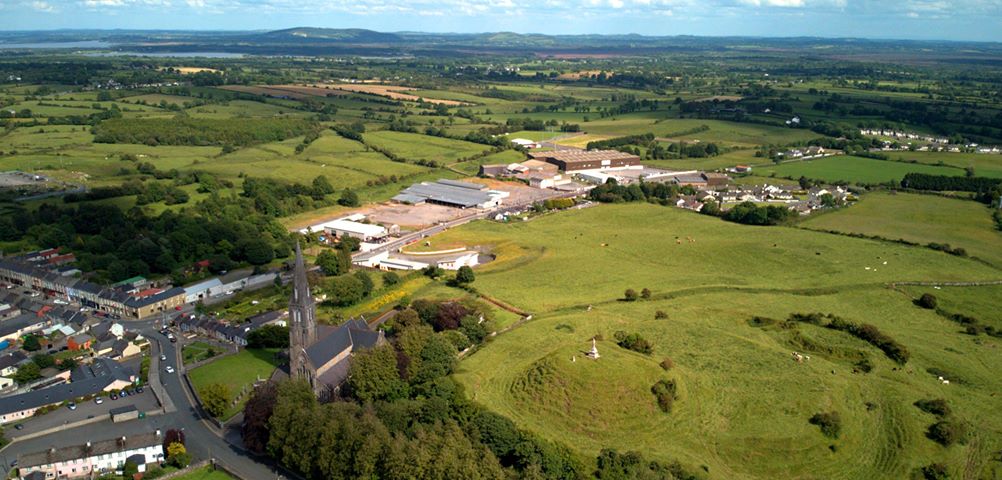Granard Motte & Bailey

The town of Granard in north-east Longford is dominated by Granard Motte and Bailey. This is an Anglo-Norman fortification which centres on a large man-made earthen mound called the motte.
The motte would have originally had a timber structure called a ‘keep’ on top, which was the heart of the castle complex.
At the base of the motte was the bailey, sometimes called a bawn, which was a courtyard housing the additional living accommodation, animal sheds and storage areas. Some of the more important sites, such as Granard, have a double-bailey.
The bailey would have been protected by an impressive timber palisade fence construction and a series of ramparts and ditches known as the ‘fosse’. Like many other motte-and-baileys in Longford, this was constructed on the site of an earlier ringfort, reusing the earlier native Irish defensive building type.
It is also the most likely location of the inauguration site of the Ó Fearghaill Bán, the local branch of the O’Farrell clan.
The motte at Granard was built by Richard de Tuite around the year 1199. De Tuite was a Norman knight who was granted lands in east Longford and into Westmeath in 1180 under King Henry II of England. He was later made the lord chief justice of Ireland.
He was also patron of the Cistercian monastery in the nearby village of Abbeylara and his remains were laid to rest there after his death in 1210. In 1210 King John stayed at Granard motte during his campaign against Hugh de Lacy.
St. Patrick, Ireland’s patron saint, visited Granard in his mission to convert the Irish to Christianity. In 1932, to mark the 1500th anniversary of Patrick’s arrival in Ireland, a statue was erected in his honour on the summit of the motte.
The land is currently in private ownership and the monument is under the guardianship of the State. There are no dedicated paths to the top of the motte, therefore it not walked upon in order to protect the monument from accidental damage.
We are here ↓




